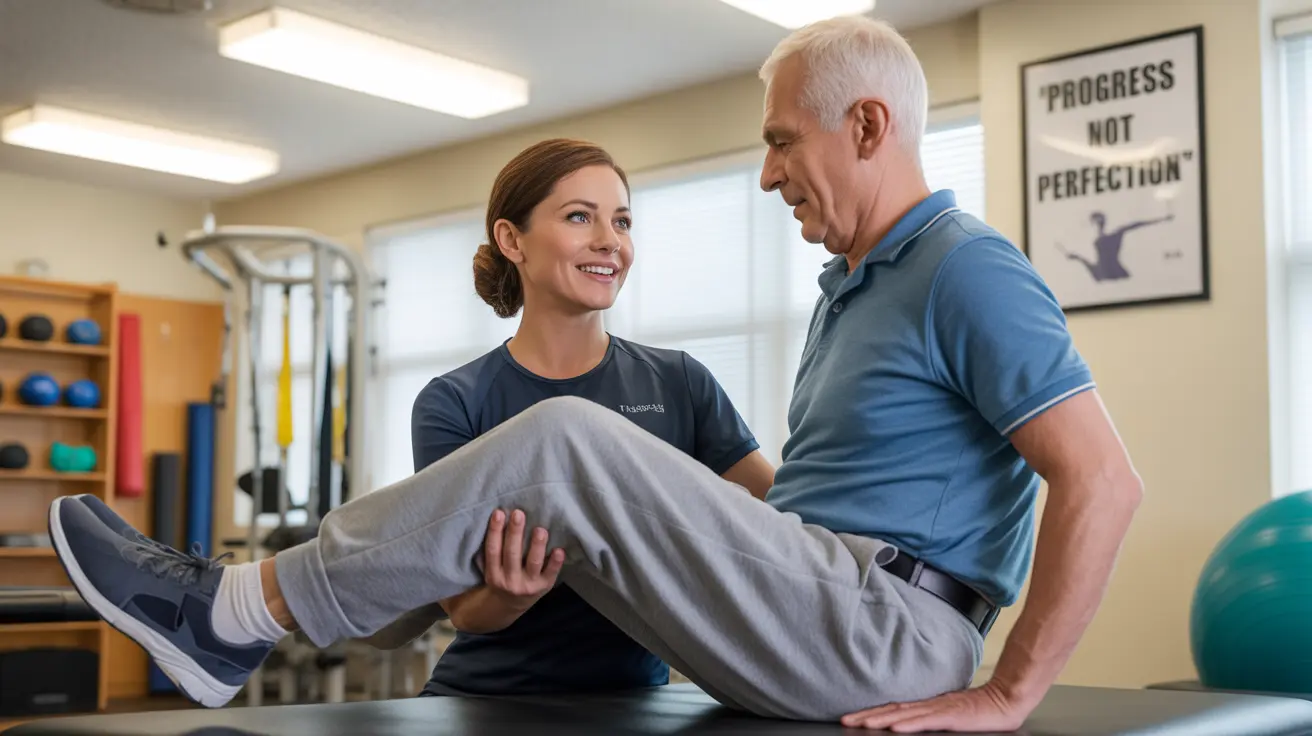Outer hip pain can significantly impact your daily activities, from walking and exercising to simply getting comfortable while sleeping. This common condition affects people of all ages and activity levels, often resulting from various underlying causes that require different approaches to treatment and management.
Understanding the nature of your outer hip pain is crucial for finding effective relief and preventing future discomfort. Let's explore the various aspects of outer hip pain, including its causes, symptoms, and treatment options, to help you better manage this challenging condition.
Common Causes of Outer Hip Pain
Outer hip pain typically stems from several distinct conditions affecting the hip's surrounding structures:
Greater Trochanteric Bursitis
This inflammation of the bursa (fluid-filled sac) on the outer hip is one of the most common causes of lateral hip pain. It often results from repetitive motions, overuse, or direct pressure on the hip area.
Hip Tendinitis
Inflammation of the tendons around the hip joint, particularly the iliotibial (IT) band, can cause significant outer hip discomfort. This condition frequently affects runners and cyclists.
Muscle Strain
Overexertion or sudden movements can lead to strains in the muscles surrounding the hip, particularly the gluteal muscles and hip flexors.
Recognizing Symptoms and Warning Signs
Key symptoms of outer hip pain include:
- Sharp or burning pain on the outer side of the hip
- Pain that worsens with physical activity
- Tenderness when touching the affected area
- Difficulty sleeping on the affected side
- Pain that radiates down the thigh
These symptoms may vary in intensity and can worsen with certain activities or positions. Understanding your specific symptoms can help healthcare providers determine the most appropriate treatment approach.
Treatment Approaches
Conservative Management
Initial treatment typically focuses on non-invasive approaches:
- Rest and activity modification
- Ice or heat therapy
- Over-the-counter pain medications
- Gentle stretching exercises
- Proper footwear and support
Physical Therapy
A structured physical therapy program can provide significant benefits through:
- Targeted strengthening exercises
- Manual therapy techniques
- Gait analysis and correction
- Custom exercise programs
- Education on proper body mechanics
Medical Interventions
When conservative treatments aren't sufficient, healthcare providers may recommend:
- Corticosteroid injections
- Ultrasound-guided therapy
- PRP (Platelet-Rich Plasma) injections
- In rare cases, surgical intervention
Prevention and Lifestyle Modifications
Taking proactive steps can help prevent outer hip pain:
- Maintain a healthy weight
- Practice proper exercise form
- Gradually increase activity levels
- Wear appropriate footwear
- Include regular stretching in your routine
Frequently Asked Questions
What are the common causes of outer hip pain and how can I identify if I have bursitis or tendonitis? Bursitis typically causes sharp pain when pressing on the outer hip area and pain while lying on the affected side. Tendonitis often presents with pain during movement and activities. Both conditions can cause outer hip pain, but bursitis tends to be more localized, while tendonitis pain may extend along the length of the affected tendon.
What symptoms should I expect with outer hip pain and when should I see a doctor? Common symptoms include sharp or burning pain on the outer hip, difficulty sleeping on the affected side, and pain that worsens with activity. Seek medical attention if pain persists beyond a few weeks, significantly impacts daily activities, or is accompanied by severe swelling or inability to bear weight.
What are effective treatments for outer hip pain caused by bursitis or tendonitis? Effective treatments include rest, ice/heat therapy, anti-inflammatory medications, physical therapy, and activity modification. In some cases, corticosteroid injections may be recommended. The specific treatment plan should be tailored to the underlying cause and severity of symptoms.
How can physical therapy help with managing and recovering from outer hip pain? Physical therapy provides targeted exercises to strengthen hip muscles, improve flexibility, and correct movement patterns. Therapists can also teach proper body mechanics, provide manual therapy, and develop personalized exercise programs for long-term management.
Are there lifestyle changes or exercises to prevent or reduce the risk of outer hip pain? Yes, maintaining a healthy weight, practicing proper exercise form, gradually increasing activity levels, and incorporating regular stretching can help prevent outer hip pain. Additionally, wearing appropriate footwear and avoiding prolonged sitting can reduce risk factors.




